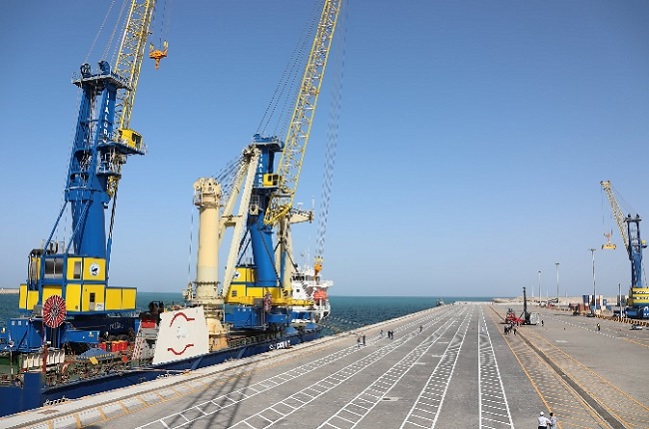Two Indian cranes have arrived at Iran’s Chabahar port, which is now rapidly developing into a major hub serving Iran, India, Central Asia and Russia.
Iran’s state-run IRNA news agency is reporting that two 100 tonne cranes from India worth $7.5 million had arrived at the Shahid Beheshti port in the Chabahar complex.
It quoted Behrouz Aqaee, Managing Director of Ports and Maritime Organisation of Iran as saying that the shipment had been sent within the framework of the long-term build-operate-transfer (BOT) agreement between Iran and India.
The third part of the heavy-lift machinery will be shipped to Chabahar by the end of the year, he said.
Iran's Chabahar received the first shipment of port equipment from India a couple of months ago.
The arrival of the cranes, will advance the handling capacity of the Shahid Behishti port of the two-part Chabahar port complex.
Chabahar is now beginning to gain traction as an oceanic gateway for landlocked countries in the region.

Prime Minister Narendra Modi with Iranian President Hassan Rouhani (File image/IANS)
Earlier this week, India and Iran celebrated Chabahar day, where representatives from key Central Asian states including Uzbekistan and Kazakhstan, the two regional heavyweights. Specifically, transport minister of Afghanistan Qudratullah Zaki, Armenia's Infrastructure minister Suren Papikyan, Iran's Minister of Roads Mohammad Eslami, Russia's Deputy Minister of Industry Oleg N Ryazantsev, Uzbekistan's Deputy Minister of Transport Choriyev Jasurbek Ergashevich and India’s Minister of State for ports Mansukh Mandaviya were present at the virtual meet which was addressed External Affairs Minister, S. Jaishankar.
During the Chabahar ceremony, Jaishankar had proposed the integration of the Chabahar Port with the International North South Transport Corridor (INSTC), marking India’s ambitions to develop a vast network of ports and freight corridors leading into Eurasia.
The International North–South Transport Corridor (INSTC) is a 7,200-km-long network of moving freight by ships, railways, and roads. The corridor aims to connect India, Iran, Afghanistan, Azerbaijan, Russia, Central Asia and Europe. The cities that would be interlinked by this corridor include Mumbai, Moscow, Tehran, Baku, Bandar Abbas, Astrakhan, and Bandar Anzali.
Integration between INSTC and Chabahar is compelling because of the limitation of the highly congested Bandar Abbas, a key Iranian port on the INSTC route. Chabahar, a deep water port therefore comes into the equation as it can ease the burden on Bandar Abbas.
Chabahar port is strategically located in the Gulf of Oman on the mouth of the strait of Hormuz, an important choke point through which oil and gas tankers drawing energy from the Gulf countries pass.
It is ideally located within a network of ports between Dubai and Mumbai. The marine distance between Chabahar and Dubai is 654 kilometres. Karachi is 845 km away, and Mumbai is 1,560 km afar. Pakistan's Chinese-funded deep sea port of Gwadar, the starting point of Beijing’s Belt and Road Initiative (BRI) is only 76 nautical miles away.
From an Indian perspective, Chabahar provides an ideal exit for iron ore drawn from Afghanistan's Hajigak mine and other natural resources from the Central Asian countries including Kazakhstan, Turkmenistan, and Uzbekistan. It is a major conduit for Indian exports in the vast geopolitically important region.




















